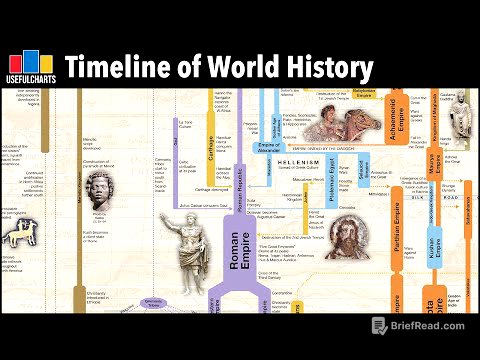TLDR;
This session covers the classification of the animal kingdom based on digestive and circulatory systems. It explains the two types of digestive systems: complete and incomplete, along with examples of organisms in each category. The session also discusses intracellular and extracellular digestion, highlighting organisms that exhibit both. Furthermore, it explains open and closed circulatory systems and different respiratory pigments like hemoglobin, erythrocruorin, and hemocyanin, found in various animals. Finally, it touches upon the evolution of the vertebrate heart, from two-chambered to four-chambered.
- Digestive systems are classified as complete or incomplete.
- Digestion can be intracellular or extracellular.
- Circulatory systems are either open or closed.
- Respiratory pigments vary, including hemoglobin, erythrocruorin, and hemocyanin.
- Vertebrate hearts have evolved from two-chambered to four-chambered.
Introduction [0:03]
Dr. Anisha welcomes students to another zoology bridge course session for NEET 2025 and 2027 aspirants. The session aims to build on previous learnings, focusing on animal kingdom classification, specifically based on digestive and circulatory systems. The class will cover different phyla and their classification methods, promising a fun and informative learning experience.
Digestive System: Complete vs. Incomplete [2:22]
The digestive system is a key factor in classifying the animal kingdom. There are two main types: complete and incomplete. An incomplete digestive system features a single opening for both ingestion and egestion, seen in organisms with a blind sac body plan. Examples include cylindrates, tenophores, and platyhelminthes. A complete digestive system has two separate openings—a mouth for ingestion and an anus for egestion—characteristic of a tube-within-a-tube body plan. This type is found in ashkalis, annelida, arthropoda, mollusca, echinodermata, hemicordata, and cordata.
Intracellular vs. Extracellular Digestion [9:12]
The digestion process is classified into intracellular and extracellular types. Intracellular digestion involves the engulfment of food into a vacuole within the cell, where it is then digested using intracellular enzymes. This is observed in protozoans and porifera (sponges). Extracellular digestion, on the other hand, involves the release of digestive enzymes outside the cell, with digestion occurring in the digestive tube's lumen. Humans exhibit extracellular digestion, where glands secrete enzymes into the digestive tract. Higher organisms like vertebrates, annelids, and arthropods commonly show extracellular digestion, considered a more evolved digestive process.
Combined Intra and Extracellular Digestion [19:06]
Cylindrates and tenophora exhibit both intracellular and extracellular digestion. Initially, extracellular digestion breaks down complex food into simpler forms using secreted enzymes within the body cavity. Subsequently, these simpler food components are engulfed by cells for intracellular digestion. This dual process involves extracellular enzymes breaking down complex food into simpler forms, which are then ingested by the cells.
Circulatory System: Open vs. Closed [27:50]
The circulatory system involves the circulation of components like nutrients, oxygen, and hormones throughout the body. It is divided into open and closed types. In an open circulatory system, blood is present freely in the body cavity without defined vessels. In a closed circulatory system, blood flows through closed vessels to reach tissues and organs. The open circulatory system has blood present in an open space in the body cavity, while the closed circulatory system transports blood to the tissues through closed vessels.
Respiratory Pigments: Hemoglobin, Erythrocruorin, and Hemocyanin [36:14]
Respiratory pigments facilitate the transport of respiratory gases like oxygen and carbon dioxide. Hemoglobin, found in vertebrates, is reddish due to iron and is present in RBCs. Erythrocruorin, also red due to iron, is present in the plasma of annelids and some arthropods. Hemocyanin, containing copper, gives blood a blue color and is found dissolved in the plasma of mollusks.
Evolution of Vertebrate Heart Chambers [43:16]
The vertebrate heart has evolved in chamber complexity. Fish have a two-chambered heart (one auricle and one ventricle). Amphibians have a three-chambered heart (two atria and one ventricle). Reptiles possess an incompletely four-chambered heart. Mammals, birds, and crocodiles have a completely four-chambered heart (two atria and two ventricles). The next class will discuss the circulation process in each type of heart.









